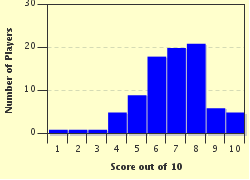Quiz Answer Key and Fun Facts
1. Civilization was able to develop in ancient Egypt due to the presence of a great river - the Nile! Coming from the Greek "Nelios", what does the name mean?
2. In southern Egypt the Nile River offered the ancient people natural protection from neighbors, such as the Nubians. The water is blocked by rocks, stones, and rapids in some areas. What are these blockages called?
3. The Kingdom of Lower Egypt developed at the mouth of the Nile River. What geographical term is used to describe the land at the mouth of a river?
4. The ancient Egyptians recognized two areas of land in their country. The Black Land was their name for the fertile land that touched the river. What did they call the land that was desert?
5. In retrospect, it is apparent that the Sahara Desert was a detriment to the development of civilization in ancient Egypt.
6. The Nile River flooded annually. Which of the following was a benefit of the yearly inundation?
7. In the dry lake beds of Egypt, a mineral was found that was important in the mummification process. What is the salt-like mineral called?
8. In the desert there are sometimes fertile areas where water can be found. What is such an area called?
9. The pyramids at Giza were built on a high tableland. What is the term for this type of land form?
10. A reed grew along the Nile River was that used for making many products, such as sandals and even boats! What was this reed called?
Source: Author
ponycargirl
This quiz was reviewed by FunTrivia editor
NatalieW before going online.
Any errors found in FunTrivia content are routinely corrected through our feedback system.


